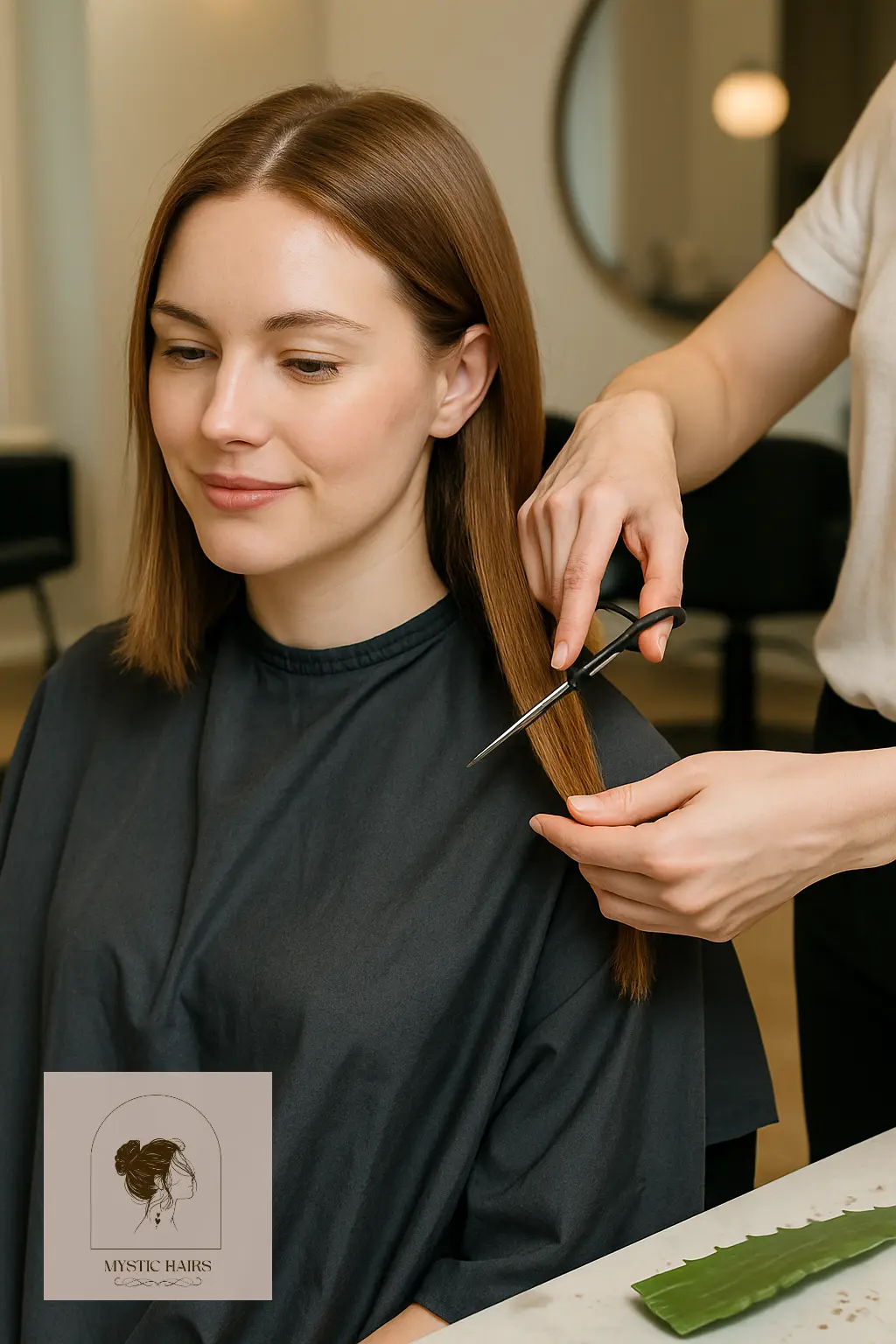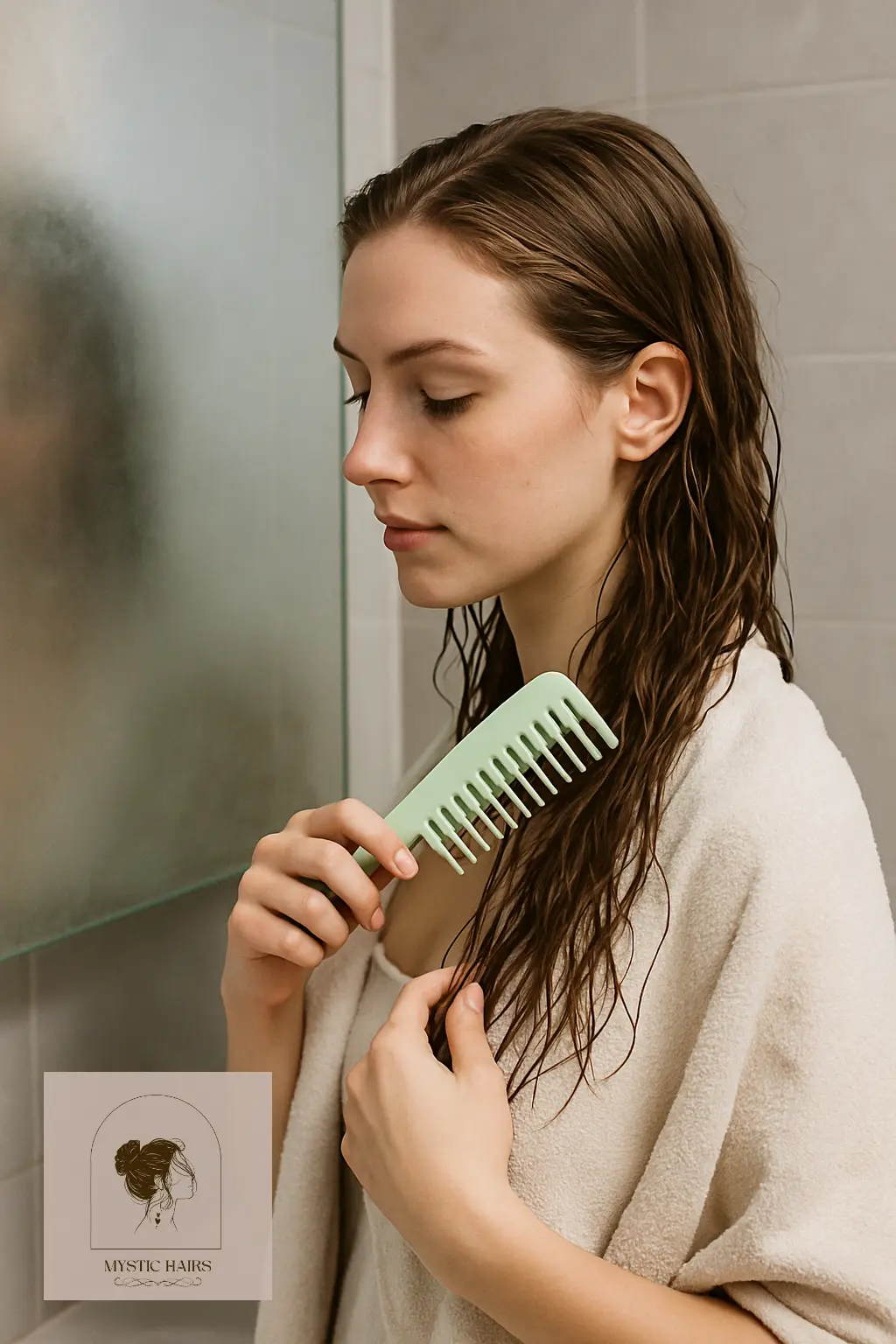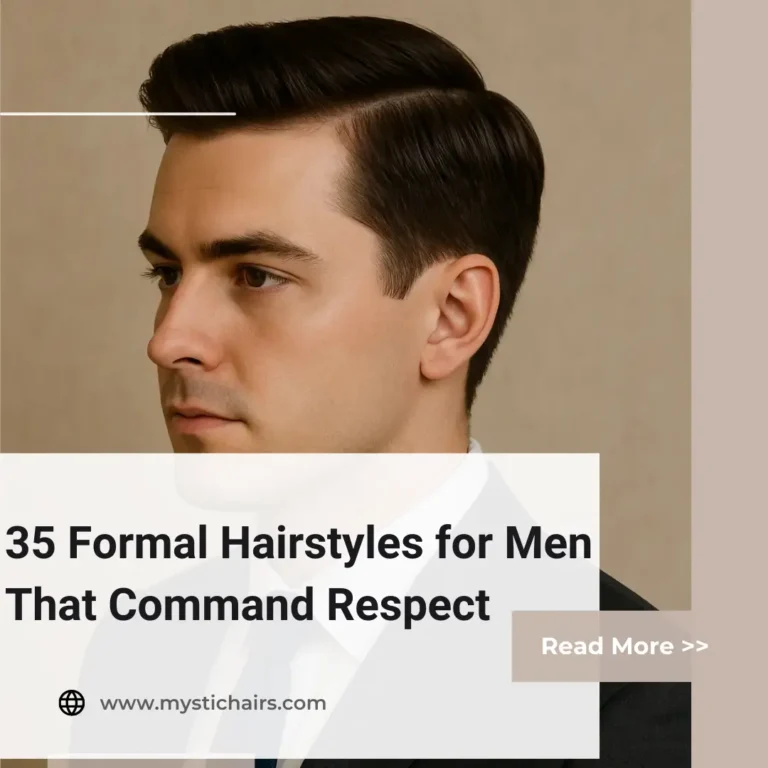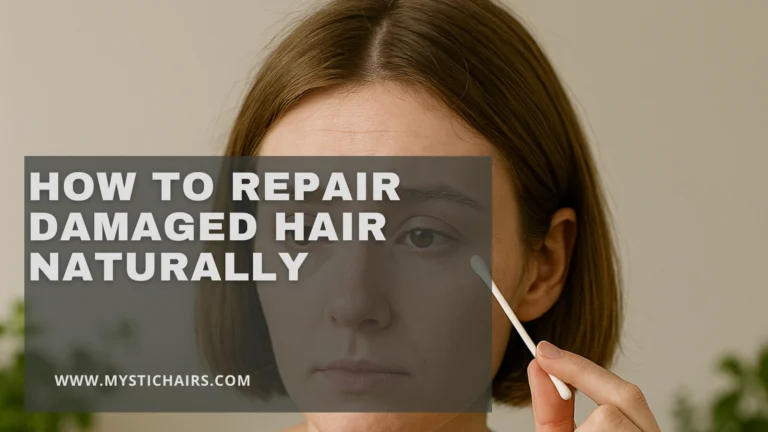How to Prevent Hair Breakage: 15 Expert Tips for Strong, Healthy Hair
How to prevent hair breakage is a concern for many women because breakage not only affects the length of hair but also its overall health, texture, and appearance. Unlike natural shedding, which happens at the root, breakage occurs when the hair shaft becomes weak and snaps mid-length, leaving uneven, shorter pieces. This problem can make even thick hair appear thin and frizzy. Breakage usually results from daily habits like frequent heat styling, chemical treatments, using the wrong hair products, poor nutrition, and even mechanical damage caused by harsh brushing or tying hair too tightly. When these stressors are combined, the structural integrity of the hair cuticle and cortex begins to weaken, making hair fragile and prone to snapping.
The good news is that this cycle of damage can be stopped and even reversed with the right care. By focusing on a healthy hair care routine that includes protective products, gentle styling, and natural remedies for hair breakage, you can restore strength to your strands. Hair that has been consistently exposed to stress can bounce back if you commit to nurturing it over time.
How to Prevent Hair Breakage
Let’s explore 15 deeply effective tips for strong hair that will help you stop breakage, rebuild healthier strands, and achieve the kind of shine and manageability that comes only from a balanced approach.
Keep Your Hair Properly Moisturized
Dryness is one of the most common causes of hair breakage, as brittle hair lacks flexibility and elasticity. When hair does not have enough moisture, it becomes rigid and fragile, making it more likely to snap during normal brushing, styling, or even while you sleep. To maintain optimal hydration, choose a moisturizing shampoo and conditioner that are free from harsh sulfates and enriched with ingredients such as aloe vera, argan oil, shea butter, and glycerin. These ingredients penetrate deep into the hair shaft, delivering hydration and smoothing down the cuticle layer so that hair retains its strength and natural bounce.
In addition to your regular wash routine, make moisturizing a daily focus by incorporating leave-in conditioners and hydrating sprays, especially on the mid-lengths and ends of the hair. These lightweight products help replenish lost moisture throughout the day and reduce friction that contributes to breakage. Keeping your hair hydrated is an essential step in any hair breakage treatment routine because well-moisturized hair is more resistant to daily wear and tear.

Avoid Excessive Heat Styling
Heat styling tools such as blow dryers, flat irons, curling wands, and hot rollers are convenient but extremely damaging if used too often. High heat breaks down the natural protein bonds in the hair and dries out the cuticle, which weakens the shaft and leads to hair snapping off over time. If you want to strengthen weak hair, try to significantly reduce your reliance on these tools. Instead of blow-drying, allow your hair to air dry whenever possible, and experiment with heatless styling techniques such as braiding damp hair to create natural waves or using foam rollers to add body without damage.
On the occasions when heat styling is unavoidable, make sure to apply a heat protectant spray or serum to your damp hair before using any tool. These protective products coat each strand, creating a barrier that reduces the amount of direct heat that penetrates the hair. Over time, limiting heat exposure not only prevents breakage but also improves texture, leaving your hair softer and easier to style.

Breakage can often start at the scalp — tackle flakes and irritation first with our guide on how to get rid of dandruff.
Get Regular Trims to Remove Split Ends
Split ends occur when the protective cuticle of the hair wears away at the ends, leaving the inner layers exposed. Once this happens, the damaged section begins to fray, and if left untreated, the split moves upward along the shaft, causing more breakage. Regular trims—every 8 to 10 weeks—remove the weakest parts of your hair and prevent splits from spreading further. This is not about losing length but about preserving the health and structure of your hair so that it can grow longer without breaking.
Many people believe that trimming hair slows down growth, but the opposite is true. When your ends are healthy, the entire strand remains stronger, so you experience less breakage and retain more length over time. Making trims part of your tips for strong hair routine will gradually lead to thicker, more resilient hair that is free from ragged ends.

Use a Wide-Tooth Comb Instead of a Brush on Wet Hair
Wet hair is particularly delicate because the cuticle layer is temporarily lifted, which means the strands are at their weakest state. Brushing wet hair with a fine-tooth comb or stiff bristles can easily stretch the strands beyond their breaking point. Instead, use a wide-tooth comb designed for detangling wet hair. Start at the ends and gently work your way up toward the roots, using slow, careful movements to minimize pulling.
For curly or coily hair types, finger detangling or using a detangling brush designed for curls can be even gentler. The goal is to reduce tension and friction, which are two major culprits in hair breakage treatment routines. When you care for your wet hair gently, you reduce unnecessary snapping and keep your strands stronger over time.

Apply Leave-In Conditioners and Strengthening Serums
Adding a leave-in conditioner or serum to your healthy hair care routine creates an additional layer of protection against damage. These products are usually lightweight but packed with ingredients that repair and protect. Look for formulations that contain keratin, biotin, silk amino acids, and panthenol, as these strengthen the structure of your hair while providing extra hydration and manageability.
Leave-in products also help shield your hair from external factors like UV rays, friction from clothing, and pollutants that weaken the cuticle. Apply a small amount to damp hair, focusing on the mid-lengths and ends, and leave it in throughout the day. This simple step reduces breakage and keeps your hair softer, smoother, and better equipped to handle daily stress.

Protect Hair During Sleep with Silk or Satin Pillowcases
Nighttime friction is often overlooked when addressing how to prevent hair breakage. Cotton pillowcases can be rough on hair strands, creating friction as you toss and turn during the night. This constant rubbing leads to tangles, frizz, and breakage, especially around the ends and edges. Switching to a silk or satin pillowcase allows your hair to glide effortlessly, reducing friction and protecting the integrity of your strands.
Additionally, you can go one step further by wrapping your hair in a silk or satin scarf before bed or loosely braiding it to minimize movement. By protecting your hair while you sleep, you reduce mechanical stress, which adds up significantly over time.

Once you’re preventing breakage, support healthy length with these tips on how to grow your hair faster.
Limit Chemical Treatments
Chemical treatments such as bleaching, coloring, relaxing, and perming alter the internal structure of your hair, making it weaker and more prone to breakage. While these processes can achieve beautiful results, overusing them leaves the cuticle damaged and the inner layers of the hair exposed. If you choose to have chemical treatments, try to space them out as much as possible, and always go to a professional who knows how to balance results with care.
After a chemical process, treat your hair with intensive repairing masks that rebuild lost proteins and seal the cuticle. With thoughtful care, you can enjoy color or texture changes without compromising the long-term strength of your strands.

Deep Condition Weekly
Weekly deep conditioning is one of the best ways to repair damaged strands and prevent breakage in the long run. Regular conditioners work only on the surface level, smoothing the cuticle temporarily. A deep conditioning mask, however, penetrates deeper into the hair shaft, replenishing moisture and strengthening the inner structure of the hair. Ingredients like shea butter, avocado oil, honey, and hydrolyzed proteins repair weak areas, improving elasticity and resilience.
To use, apply the mask after shampooing, focusing on mid-lengths and ends. Leave it on for 20–30 minutes with a shower cap to allow heat from your scalp to activate the formula. Over time, this weekly ritual becomes an essential step in a healthy hair care routine, making your hair softer, shinier, and far less likely to break.

Avoid Tight Hairstyles That Pull on Hair
Styles that involve constant tension, such as tight ponytails, buns, braids, or extensions, put stress on your hair follicles and the hair shaft itself. This repeated pulling can cause breakage, especially at the edges and crown. If worn frequently, these styles can even lead to traction alopecia, a form of hair loss caused by tension.
Opt for looser hairstyles whenever possible, and choose fabric-covered hair ties or spiral bands that reduce pressure. Letting your hair rest from tight styles a few days a week allows it to recover and helps maintain its natural strength. Protective styling should protect, not harm, so always check that there is no pulling at the roots.

Maintain a Balanced Diet for Strong Hair
Your hair’s health starts from the inside. The nutrients you eat directly affect your scalp and strands, making diet a critical part of any hair breakage treatment. Hair is primarily made up of a protein called keratin, so including enough protein in your diet from sources like eggs, lean meats, beans, and lentils is essential. Omega-3 fatty acids, found in fish, walnuts, and flaxseeds, help keep the scalp hydrated and hair soft.
Zinc and iron prevent thinning and brittleness, while vitamins A, C, D, and E support healthy hair growth and protect against environmental stressors. A diet rich in colorful fruits, leafy greens, nuts, and whole grains strengthens weak hair from within, creating a foundation for strong, resilient strands.

Stay Hydrated to Keep Hair Flexible
Just as your skin shows signs of dehydration, your hair does too. Drinking enough water daily is one of the simplest yet most effective ways to strengthen weak hair. Hydration ensures that your scalp has the moisture needed to produce healthy oils and that your strands remain flexible instead of brittle.
Combining internal hydration with external moisturizers and deep conditioning creates a powerful combination. Well-hydrated hair bends rather than breaks, making water intake an overlooked but vital factor in preventing hair breakage naturally.

Hair breakage often goes hand-in-hand with dryness — here’s how to reduce frizz in hair while keeping strands resilient.
Be Gentle When Towel Drying Hair
Many people make the mistake of vigorously rubbing their hair with a towel after washing. This rough action creates friction, lifts the cuticle, and weakens the hair shaft. A gentler approach can make a huge difference. Instead of rubbing, use a microfiber towel or soft cotton T-shirt to gently press and squeeze out excess water.
Microfiber towels absorb water quickly without roughness, helping your hair dry faster while keeping the strands smooth. This simple change is one of the easiest adjustments in a healthy hair care routine, and it greatly reduces unnecessary breakage caused by daily habits.

Avoid Over-Washing
Washing your hair too often can strip it of the natural oils that protect it, leaving strands dry, rough, and weak. Over-cleansing is particularly damaging if you already use heat or chemical treatments. Aim to wash your hair two to three times a week using a gentle, sulfate-free shampoo that cleanses without over-drying.
On days when you skip washing, you can refresh your scalp with a dry shampoo or apply a lightweight leave-in conditioner to maintain softness. By balancing how often you wash, you allow your scalp’s natural oils to protect and nourish your hair, leading to less breakage over time.

Manage Stress for Healthier Hair
Chronic stress doesn’t just affect your mind and body—it also affects your hair. Stress-related hormonal changes can weaken the hair follicle, slow growth, and make hair more fragile. Practicing relaxation techniques such as yoga, meditation, or even 20 minutes of mindful breathing each day can help.
Managing stress is an essential but often overlooked part of hair breakage treatment. When your internal environment is balanced, your scalp produces stronger, healthier strands that are less likely to break.

Be Consistent with Your Hair Care Routine
Consistency is key when learning how to prevent hair breakage. It takes time to repair damage, rebuild protein bonds, and develop healthier habits. Following these steps occasionally will not give lasting results; applying them regularly over weeks and months will.
A good routine involves protecting hair from damage, hydrating deeply, trimming regularly, eating a nutrient-rich diet, and minimizing harsh styling practices. By making these habits part of your lifestyle, your hair will gradually become stronger, softer, and more resilient.

FAQs
1. What causes hair breakage?
Hair breakage is often caused by heat styling, chemical treatments, tight hairstyles, lack of moisture, nutritional deficiencies, and rough handling. These factors weaken the hair shaft, making it snap easily.
2. Can natural remedies stop hair breakage?
Yes. Natural remedies for hair breakage, such as coconut oil, aloe vera, avocado masks, and egg protein treatments, can strengthen hair and restore moisture when used regularly alongside a proper healthy hair care routine.
3. How often should I trim my hair to prevent breakage?
Regular trims every 8 to 10 weeks remove split ends before they travel up the hair shaft. This simple step helps reduce breakage and allows the hair to grow longer and healthier.
4. Does diet affect hair breakage?
Absolutely. A diet rich in protein, omega-3 fatty acids, vitamins, and minerals supports stronger, healthier hair. Proper nutrition strengthens hair from within, reducing brittleness and breakage.
5. What is the fastest way to strengthen weak hair?
The fastest way to strengthen weak hair is to combine deep moisturizing treatments, reduce heat styling, protect your hair during sleep, use leave-in conditioners, and ensure a balanced, nutrient-rich diet.
Final Note
Preventing hair breakage is not about one single product—it’s about creating a balanced approach that addresses the root causes of damage. By combining these 15 tips for strong hair—including deep conditioning, gentle handling, protective styling, a nutrient-rich diet, and natural hair breakage treatments—you can transform weak, fragile strands into healthy, vibrant hair.
How to prevent hair breakage comes down to consistency, patience, and care. With the right habits and dedication, you can rebuild strength, minimize damage, and enjoy hair that looks and feels its best every single day.

Aria Blake is a beauty writer and hairstyle curator passionate about empowering women through timeless trends and modern haircare. With a deep love for natural textures and creative styling, Aria blends expert tips with real-life inspiration to help you look and feel your best—every single day. When she’s not writing for MysticHairs.com, you’ll find her exploring protective styles, sipping herbal tea, or pinning dreamy looks for your next hair glow-up.






